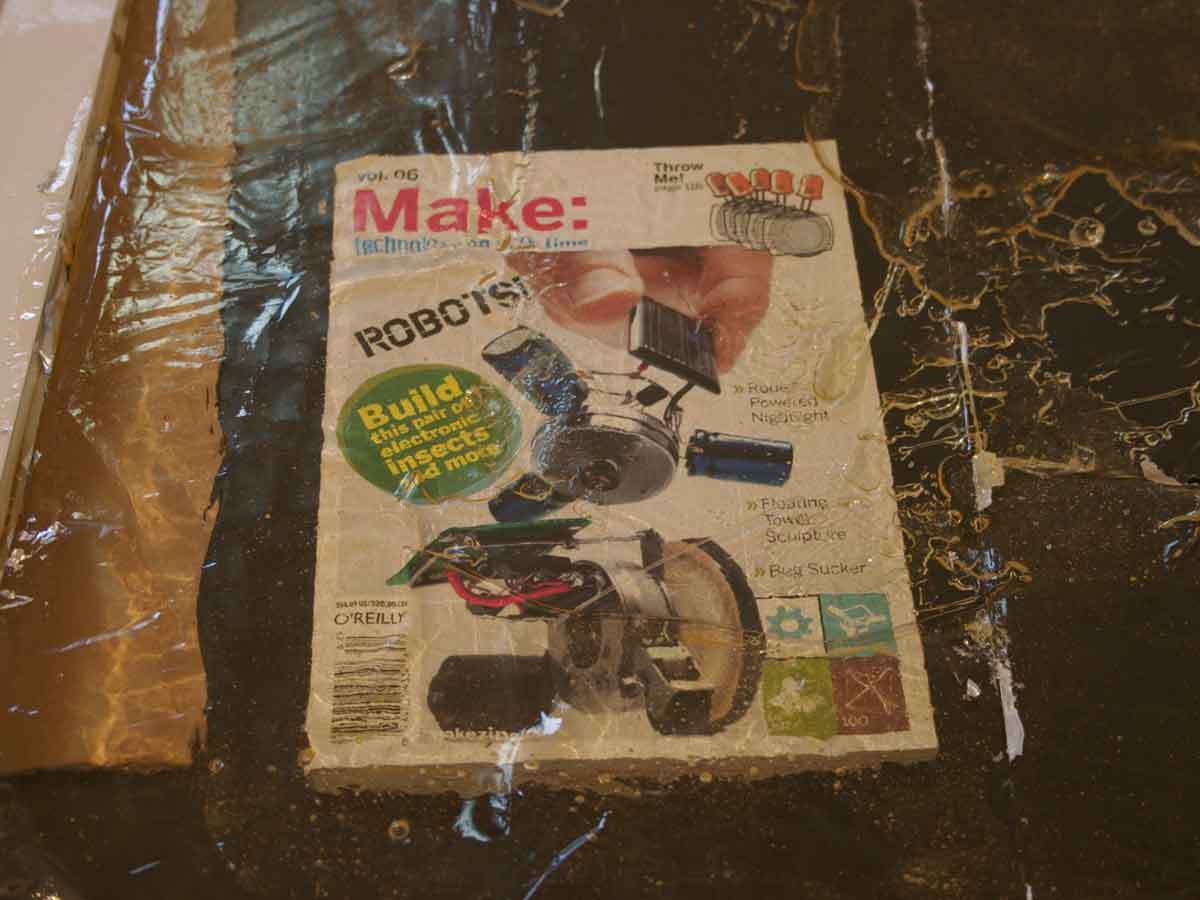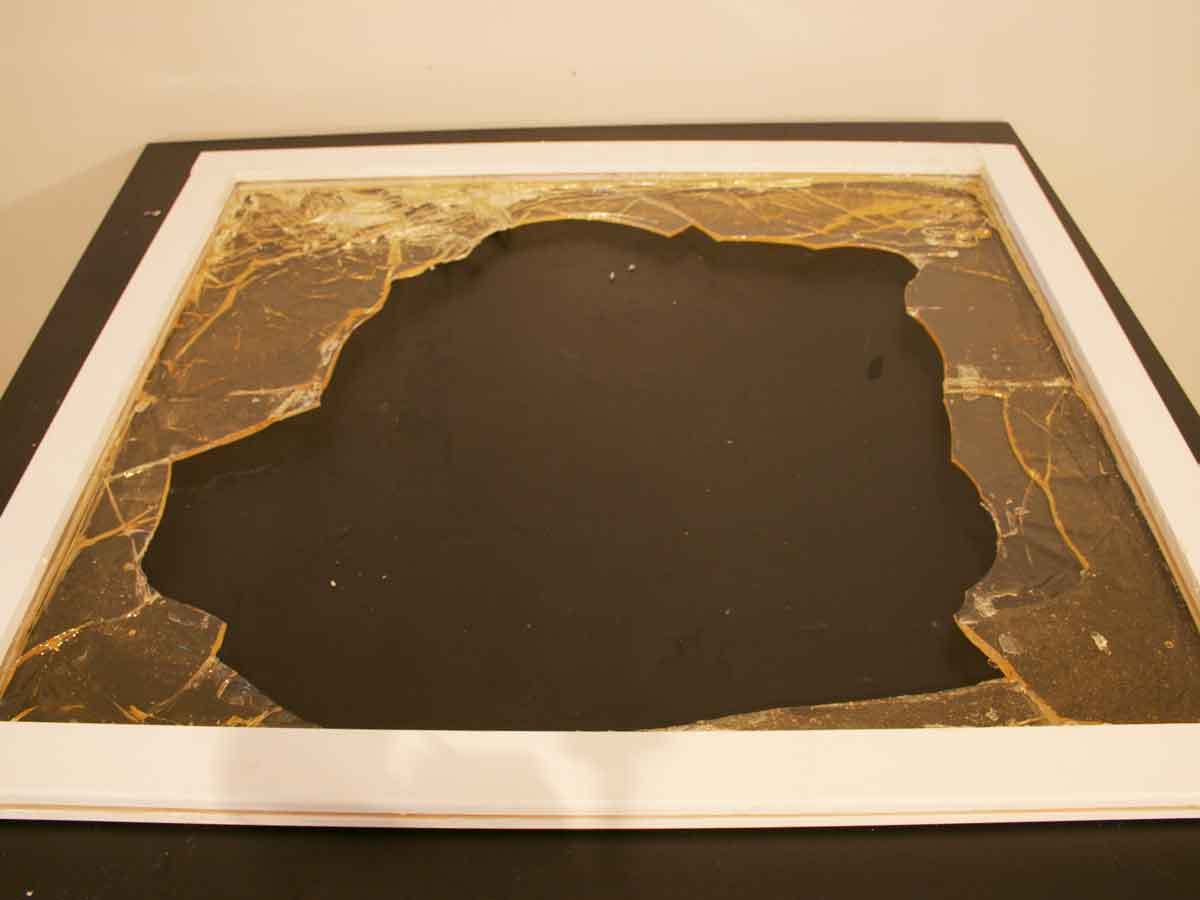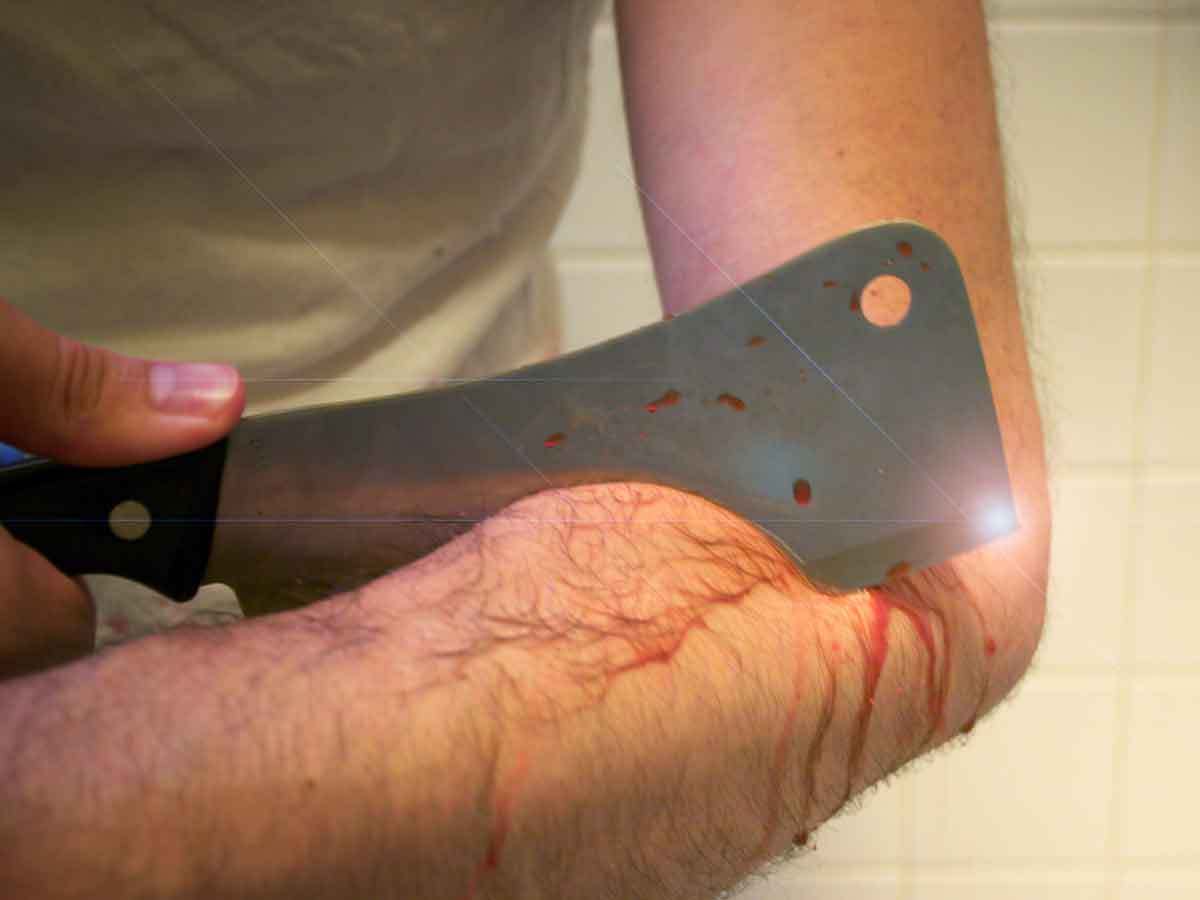The perfect action scene needs combat, gore, and at least one actor going through a window. Here’s how I shot a scene with all these ingredients, from making the special effects to shooting and editing the footage.
Projects from Make: Magazine
Action Movie Effects
Shoot a fight scene with a blood-spurting knife wound and a head smashing through a window.
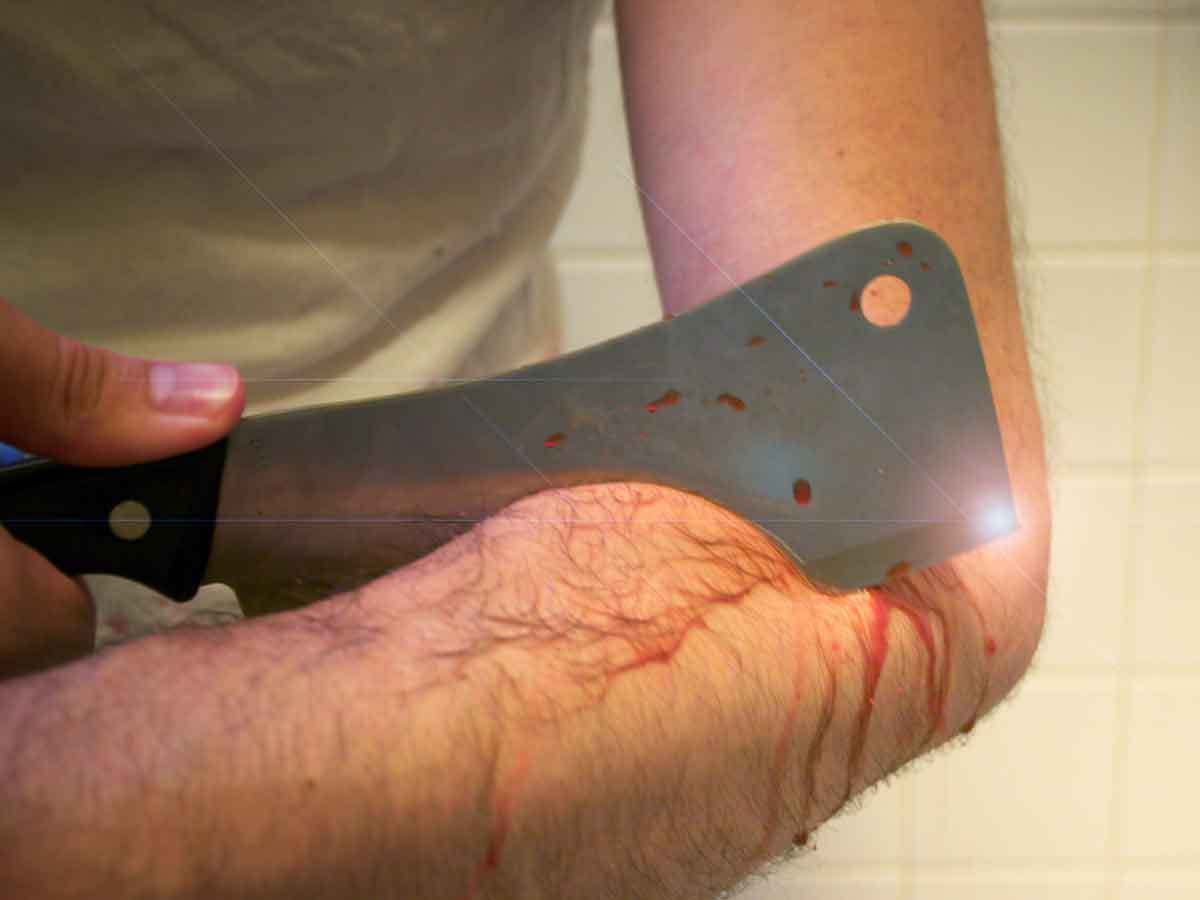
Make the movie glass.
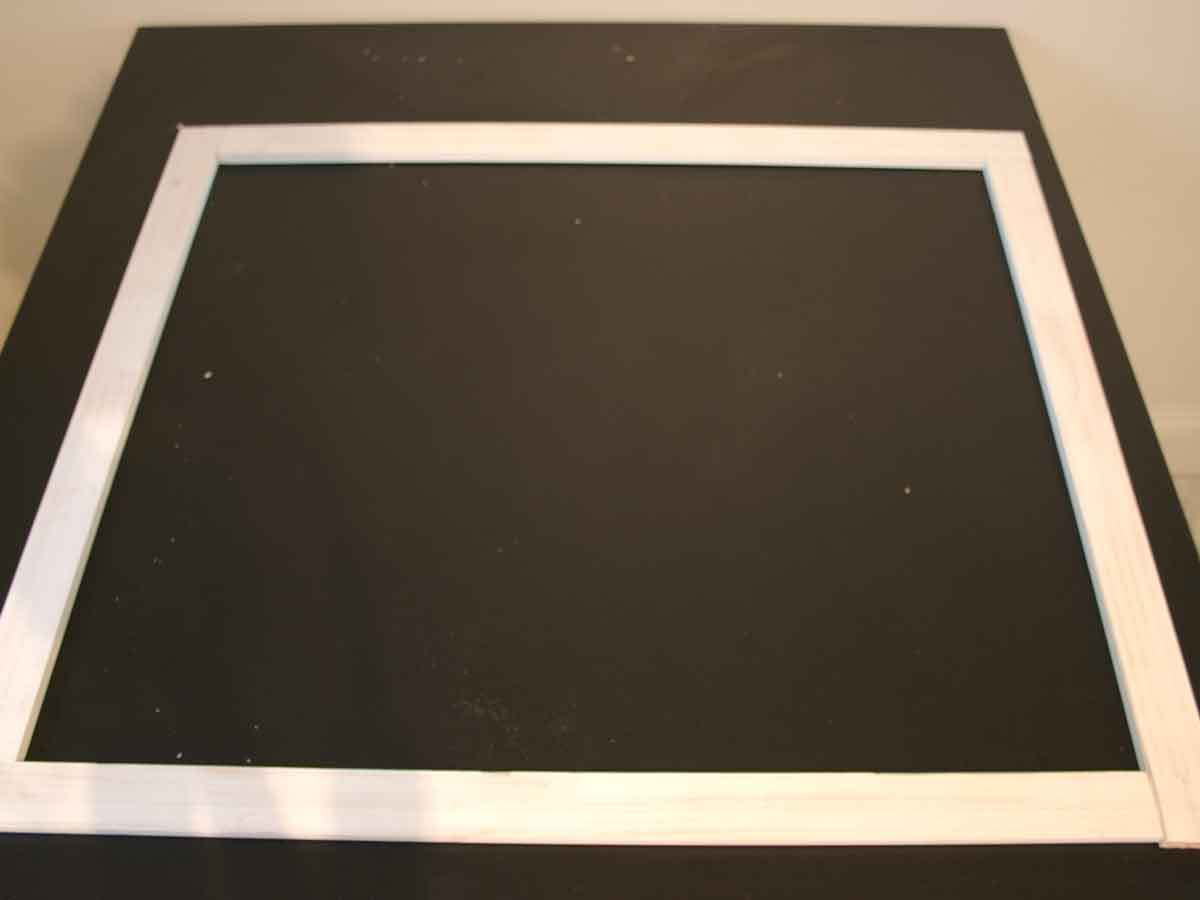
We wanted one actor to shove another’s head through a kitchen window. Who wouldn’t? We found a good location that had a single-pane window, 30″×26″, which we could swap out for our own fake-glass concoction. We made a harmless shattering window pane by casting sugar glass in a wooden frame (recipe next page). If your window is much bigger and has several panes, you can add thin balsa divisions between the panes. These will hold everything together until it’s shattering time.
First, glue together a rectangular frame to fit your window, using 3 layers of thin wood. Make all 3 layers flush around the window’s outer perimeter, but around the inner edge, sandwich the front and back layers around a narrower middle layer. This leaves a gap for the molten sugar to flow into. Glue the frame together and press the corners under weights until it dries.
Put the frame on top of a sheet of cardboard that’s larger than the pane, and cut more cardboard to fit snugly in the frame and match the thickness of the bottom layer of wood. Cover the cardboard in the frame with aluminum foil. Be careful to keep the foil flat; even small wrinkles in the foil will be cast into the sugar glass.
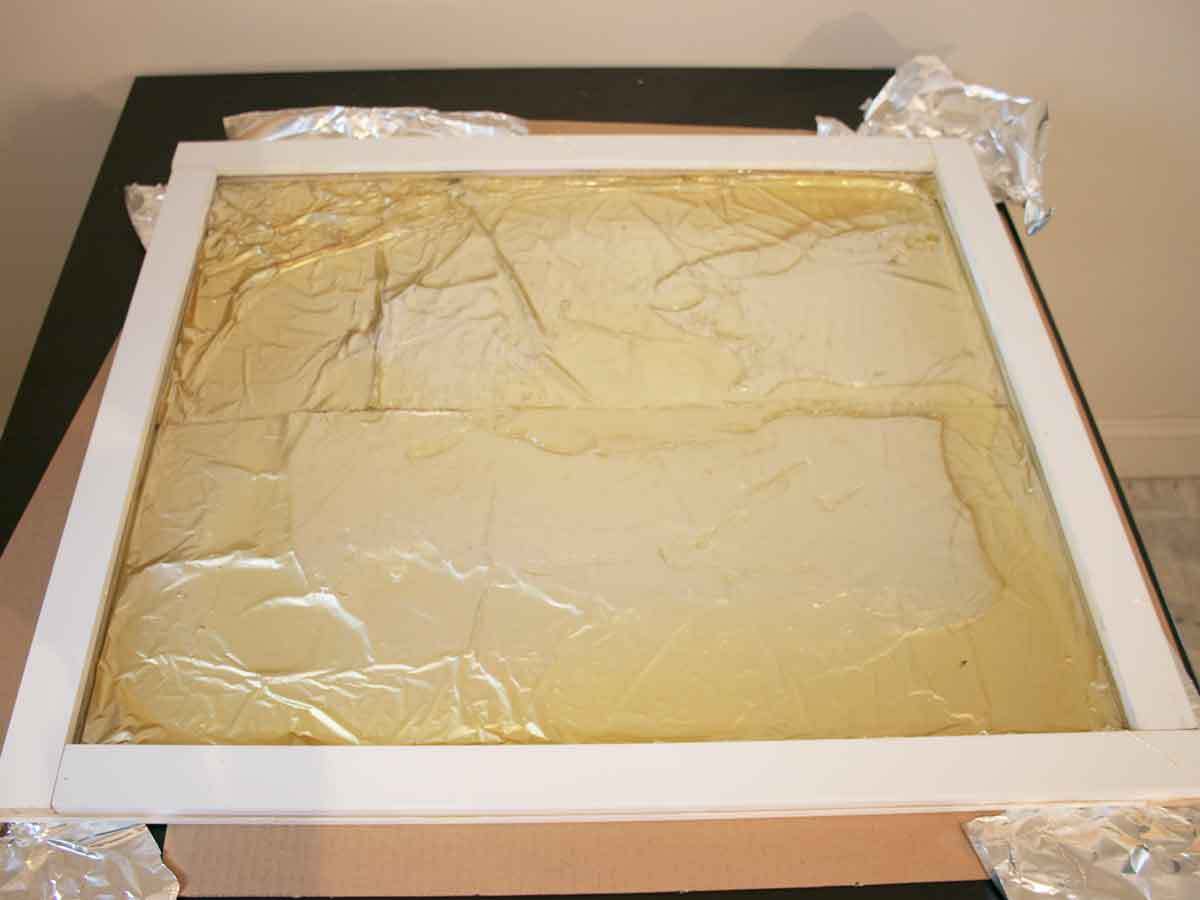
Cook the water, corn syrup, sugar, and coloring in a pot on a stove. Use a candy thermometer to monitor the temperature, and when it approaches boiling (212°F), lower the flame and let it simmer for half an hour.
Turn the flame back up and heat the liquid to 302°F (about another half hour). Pour it into the frame. Use a spatula to gently spread the mixture, but don’t disturb the foil.
With each batch, pour an extra spoonful onto a piece of scrap foil; use this to gauge the composition, and convince your actors that they’ll have fun smashing through it. Aim for a thickness of about .75cm (or 7.5mm), otherwise the window will be either too easy or too hard to break. We needed 2 batches to fill our big window. If you use multiple batches, pour half at a time to avoid bumpy layers.
The sugar glass will take about 2 hours to fully cool and harden. After that, it’ll slowly melt and otherwise decay, so you should plan to have the window cooled and ready somewhere between several hours and one day before the shoot. Be gentle moving the window, keep the foil on until shooting time, and peel it off carefully to avoid cracking.
Make a blood-spurting knife wound.

Use a Dremel or other tool to cut an arc into the knife that’s sized to fit around the victim actor’s neck, arm, fingers, or other body part. Work on the back side of the knife (whichever side you don’t want to show on-camera) to hide mistakes and gouges. Then use a Dremel and a metal file to dull all of the knife’s sharp edges. Also dull the tip of the knife. Be sure to remove any metal filings. You don’t want any actors getting hurt.
Cut a small length of tubing to run from the far edge of the arc to the knife’s handle. If you have big hands and can palm a turkey baster, attach that to the tube, and glue the tube to the knife handle. Otherwise, use a medicine dropper. Or you can also run a longer tube through the knife-wielding actor’s sleeve to his other hand, where he won’t have to conceal the bulb.
Mix red food coloring, water, and a little cornstarch to make fake blood. Or use cheap red wine, or other on-hand substitutes. Pour it into a bowl and squeeze the bulb to load the knife up.
Conclusion
Roll Camera!
To get the most out of your special effects, make a shooting script that describes exactly what you need to include, shot by shot, and cross them off as you go. A storyboard can also help visualize each shot ahead of time, so that you don’t miss anything important.
For example:
SHOT 1. Wide, establishing shot of kitchen with HERO chopping a carrot.
SFX: CHOPPING
- An establishing shot orients the audience to your location. Show the whole room, including the window.
SHOT 2. Close-up of chopping, a shadow falls over the hands.
SFX: CHOPPING
HERO: I’ve been expecting you. I’m making us soup.
ASSASSIN: I’ve already eaten.
- Edit this to be just a few seconds. This shot will increase the pace of the sequence and establish the knife. Don’t record the dialogue until the next shot.
SHOT 3. Wide shot from original, establishing perspective. Over-the-shoulder, ASSASSIN moves away from camera, toward HERO. HERO spins wildly, swinging the cleaver.
- Record the action from both shots 2 and 3 from this angle, as one continuous shot. Mime the chopping, making no sound. When editing, begin the video of shot 3 a few frames after the Assassin begins moving. Let the dialogue lead the video, so you hear it begin over shot 2 and continue into shot 3.
- Mark points on the floor where your actors can stand well apart during the knife swing. Be careful; you’re using a real knife! Keep at least 1' of extra room between the blade and your actor. Because you’re shooting the characters in-line, the audience won’t be able to see the gap. When editing, cut this shot to end just when the knife would make contact.
SHOT 4. Cutaway, extreme close-up of HERO’s eyes.
SFX: THUNK (knife drives into ASSASSIN)
ASSASSIN: Aaagh!
- Cut to this 1-second (or less) shot when the knife would hit the Assassin. Later, slam a knife into a chicken to record this sound; it’ll squish into the flesh and thud when it hits bone. When editing, layer that sound effect into the sequence. Don’t record the Assassin’s yell until the next shot.
SHOT 5. Medium, reverse shot of original perspective (over-the-shoulder from Hero to Assassin). Knife is embedded in his arm, spurting blood. Assassin grabs the knife.
Hero punches him in the face, knocking him down. He falls out of frame, pulling out the knife.
HERO: That was for Lt. James Mitchell. He was one day from retirement.
ASSASSIN: (Groveling) I just do what they —
SFX: THUD
SFX: CLANK (knife hits the floor)
- Use a waist-up medium shot to show the actors and the cleaver effect together. Use the prop knife, and for more blood spurting from under Assassin’s shirt, hide extra blood-filled bulbs and tubes running out to production assistants (read: siblings, friends, or children) to squeeze. Assassin should yell from the knife impact to begin the shot; edit the beginning of that sound to overlap shot 4.
- Punching is another trick of perspective. The instigator should be able to swing fully and not reach the other actor, while the recipient then jolts his head in response. The camera angle obscures the point where the contact would occur, so the audience believes what it hears.
- For the sound effect, punch a whole chicken or slab of beef.
SHOT 6. Cutaway, close-up of bloody knife.
HERO: And this is ...
- This short cutaway should last 1 second or less. Bloody up the real knife and floor, and drop the knife into the frame. As with previous shots, let the sound of the knife begin in the preceding shot, and edit this shot to show the last 20 frames of the knife clattering on the ground. Also, don’t record dialogue here; overlap it back from the following shot.
SHOT 7. Reverse shot, low perspective behind ASSASSIN toward HERO. HERO grabs the back of ASSASSIN’s neck and hair, twisting out of frame toward the window.
HERO: ... for me.
- Shoot this with the full line, “And this is for me” so you can edit the audio to lead the video again. Add more blood running down the Assassin’s arm and hand.
- The audience thinks the Hero is pulling the Assassin, but for safety the Assassin is pushing the Hero’s hand, controlling the action. The Hero should lightly hold the head and neck of the Assassin, but the Assassin should lead with his head and neck to trick the viewers.
SHOT 8. Wide shot of HERO driving ASSASSIN’s arms and head through window.
SFX: CRASH
- Use this break to make sure everything is set up properly for this, the one-take-only shot. Practice the choreography first with an open window.
- As in the preceding shot, the weaker character leads all of the action, pushing through the fake window with their arms. While the sugar glass will crumble and shatter on impact, long sleeves can prevent scratches from the edge of the break. Have the actor tuck in his chin to protect his face.
- For the sound effect, don some goggles and record a large, round bottle, like an apple juice jar, shattering on cement. Or search for a clip online.
SHOT 9. Wide, reverse shot of HERO pulling bloody ASSASSIN back in, then pushing him stumbling toward the door.
HERO: You tell El Gato that I’m sick of running away. You tell El Gato I’m coming for him.
- Add blood to the Assassin’s face before this shot, and he can stumble out of frame during the dialogue.
SHOT 10. Overhead crane shot starts tight, then pulls back. HERO drops to knees. The floor is filled with blood, glass, and the knife.
Cut to black.
HERO: (Yelling) El Gatoooooooooooooooo!
- To be your own crane, firmly attach the camera to a strong tripod and swing the tripod from a ladder.
For tips on how to record convincing effects and clear dialogue, visit https://makezine.com/09/diyimaging_effect....
This project first appeared in MAKE, Volume 9, page 140.



